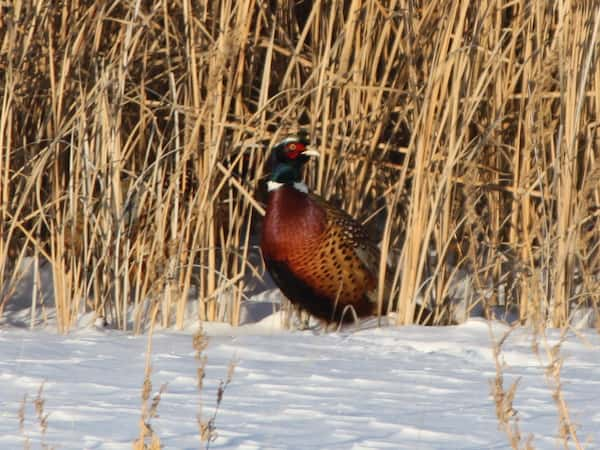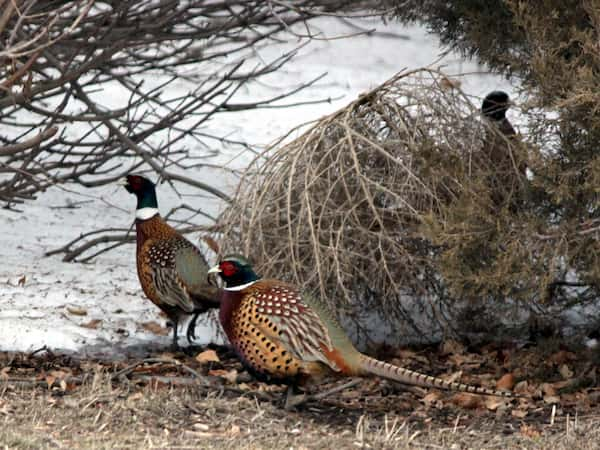
Hunting the Early Late Season
By Nick Simonson

The 2019 Pheasant Opener will be notable for the significant snowfall that has occurred throughout the birds’ central and eastern hunting range in the upper Midwest. When the system clears and hunters have dug their way out of their garages and cautiously advance into the field, prime areas will look much different for many of them than they did a week prior when plans were being finalized. Nature’s sudden shift toward winter, whether short-lived or the beginning of a long white season, has changed the playing field for many pursuing roosters here in the early goings of autumn. Hunting efforts however should not be abandoned and adjusting tactics to a more late-season style can pay off with some exciting adventures as pheasant hunting opens.

Deep Thoughts
Following major snow events, grassland habitat is often covered and unusable by birds, leaving deep thermal cover like cattail sloughs and dense shelterbelts consisting of evergreen trees and thick shrubs to provide sanctuary for pheasants as the banks and drifts settle in. Hunters venturing out now, as they would in the heart of late season, would be wise to work the edges of deeper cover such as sloughs, noting that with this summer and fall’s significant rains, these areas may also be flooded. The edges are where birds will likely be encountered and allowing a dog to work the transition between grass and reeds is a good bet following heavy snow.
Additionally, those shelterbelts which provide a buffer from winds and have significant grass around them also provide a path to good hunting when snow settles in. Ideal plantings include belts with a couple rows or more of trees and shrubs and a mix of evergreens like spruces, along with rows of low bushes like plum, caragana and dogwood. These setups provide shelter from the wind, and with a tangle of low vegetation around them, give pheasants a bunker to hole up in against the storm and move into and out of as conditions allow following the event. Pack the knee-high boots and get stomping along these spaces – many of which will have significant drifts – to locate pheasants when the weather clears.

Late Actions
Snow adds a challenging element to any hunt. On the drifted prairie, it seems that any little noise can carry for miles and sounds like the slamming of a truck door or even the hushed verbal command to a dog will set roosters into the air a whole football field ahead of the starting point. When approaching a desired hunting space in snowy conditions, silence is golden. Keep in-field discussions limited, or use hand signals, and work silently from roadsides to areas that hold birds. All those stealthy tactics normally utilized in the late season can be employed now, as the extra challenge of snow and bunched and jumpy birds requires silence.
Keep hunting dogs close by and monitor movements for birdiness when they get on the scent of their quarry. Work into the prevailing wind when present to dampen noise and remember that birds will often bunch up on the windward side of any expanse of cover, particularly following a blizzard. Pause in the last thirty or forty yards and allow sitting birds, or those that have been on the run, to get nervous and set up an explosive flush. The colors against the white background can be startling and produce some of the most memorable moments in the field.
While the recent snow may have changed a lot of hunters’ plans and most certainly the field clothes and gear they’ll need to adjust to these new conditions in the coming week or two – and possibly the rest of the season – there are still ways to get on roosters, despite the drifts. Work deep cover and do so quietly to get the most out of this early portion of the season which sports a more December-like feel and success can still be found after the storm subsides.
